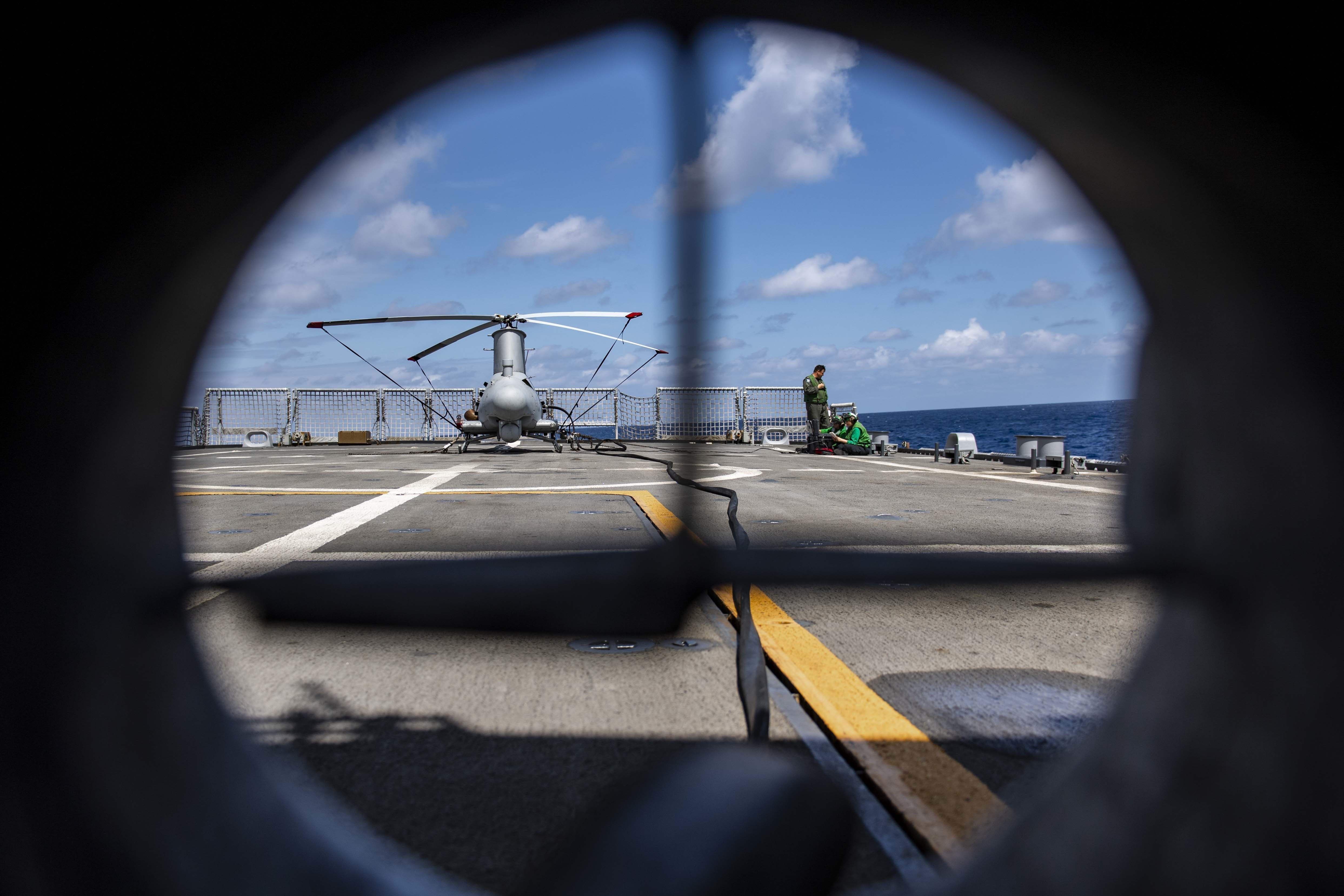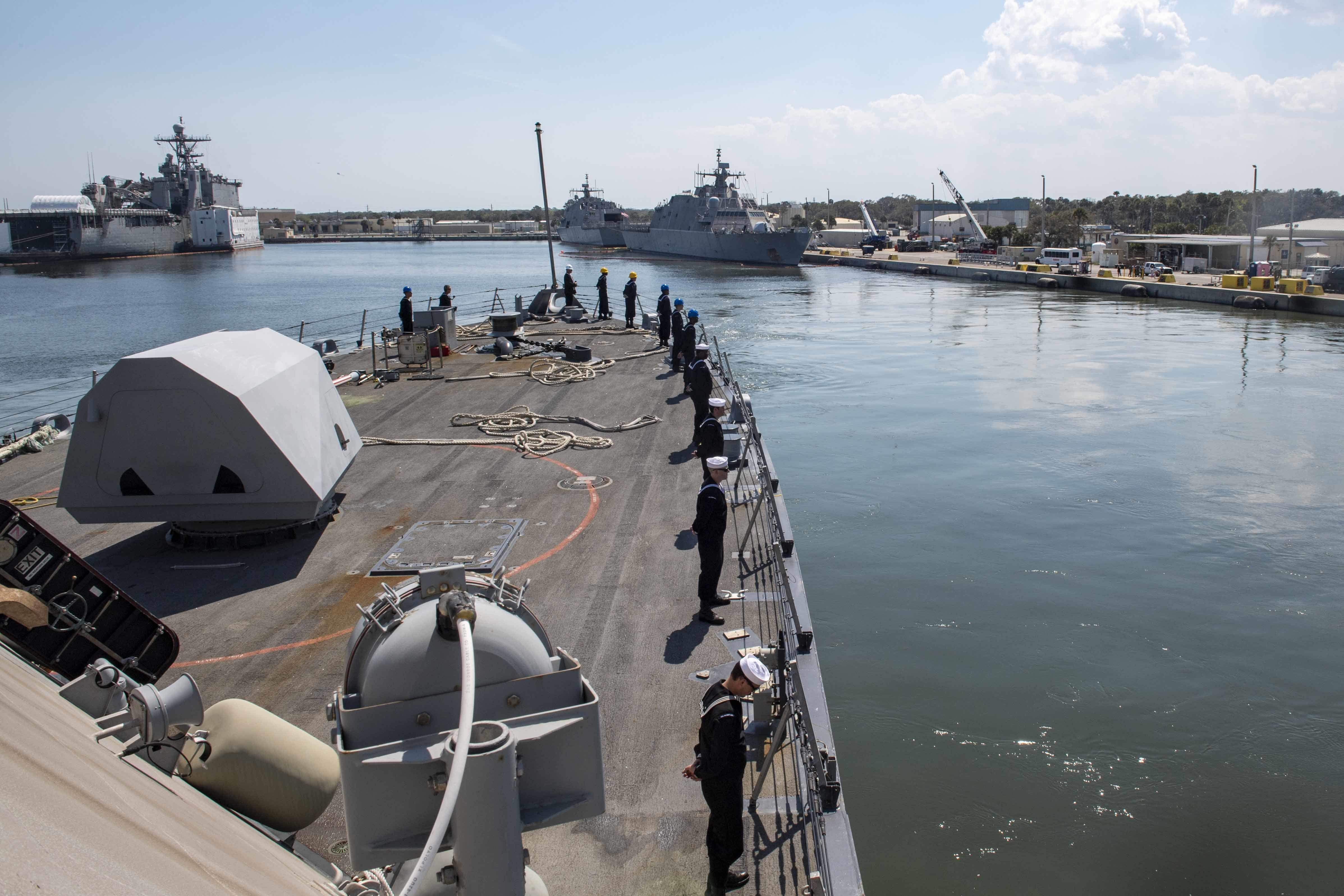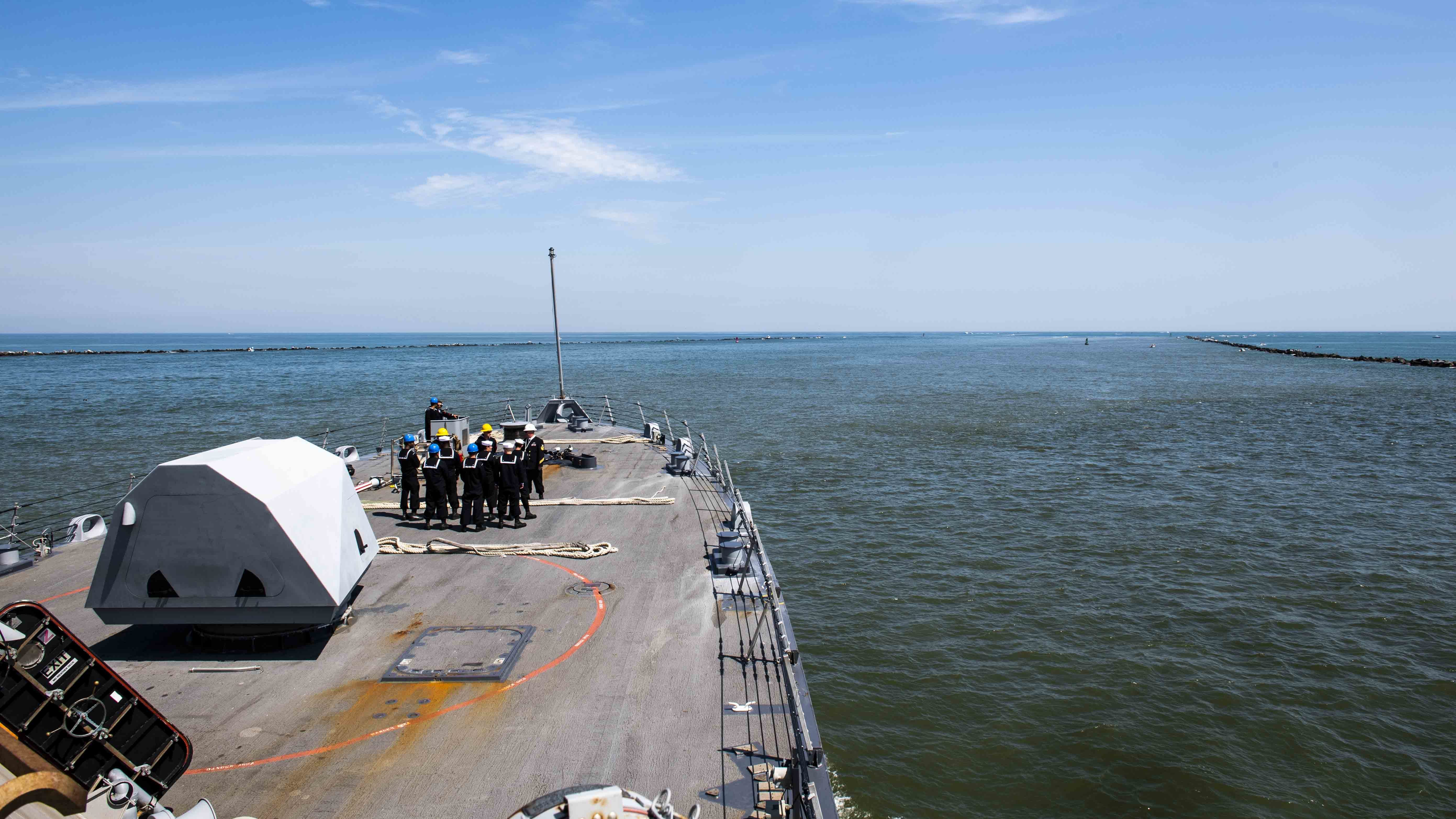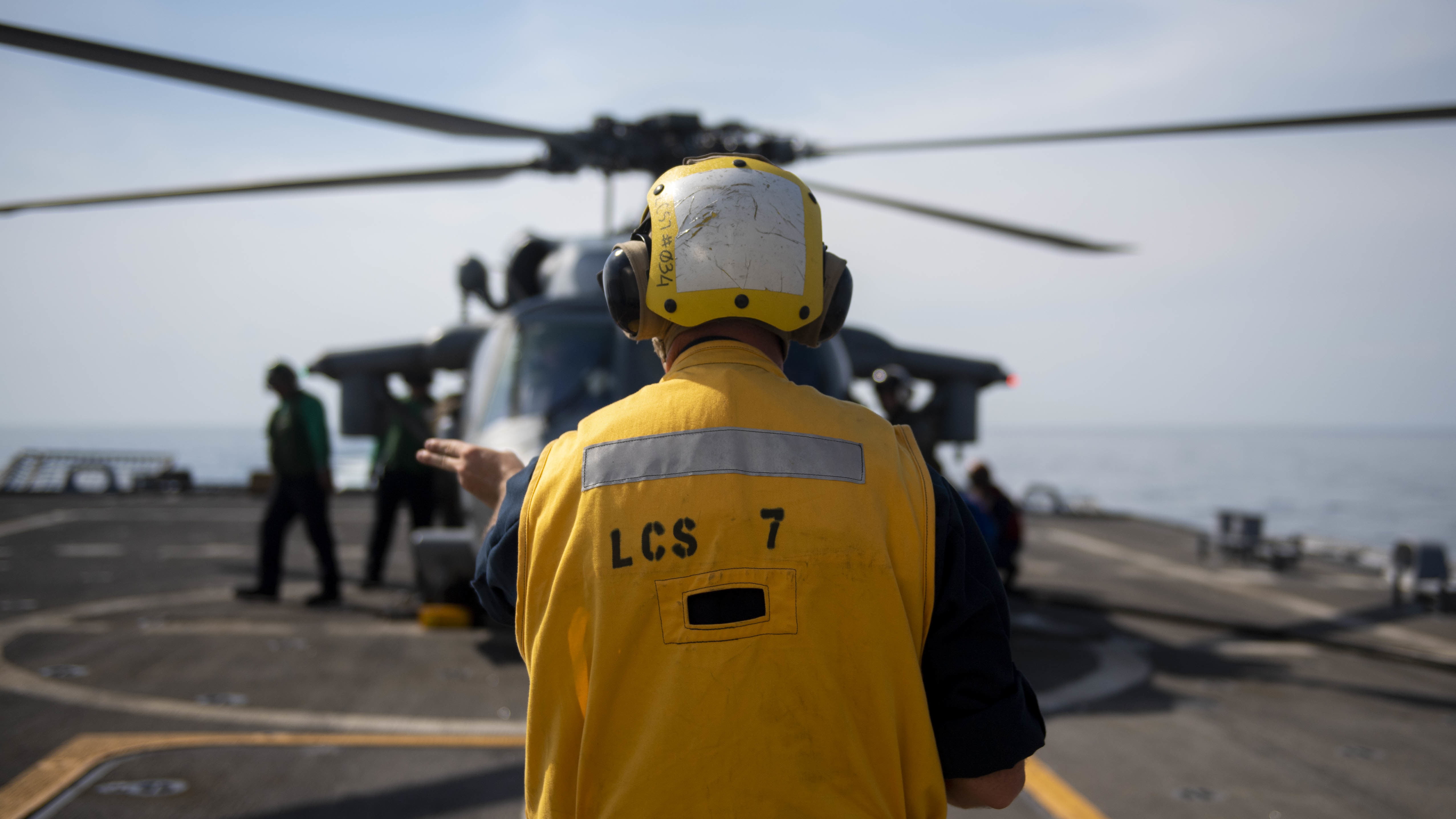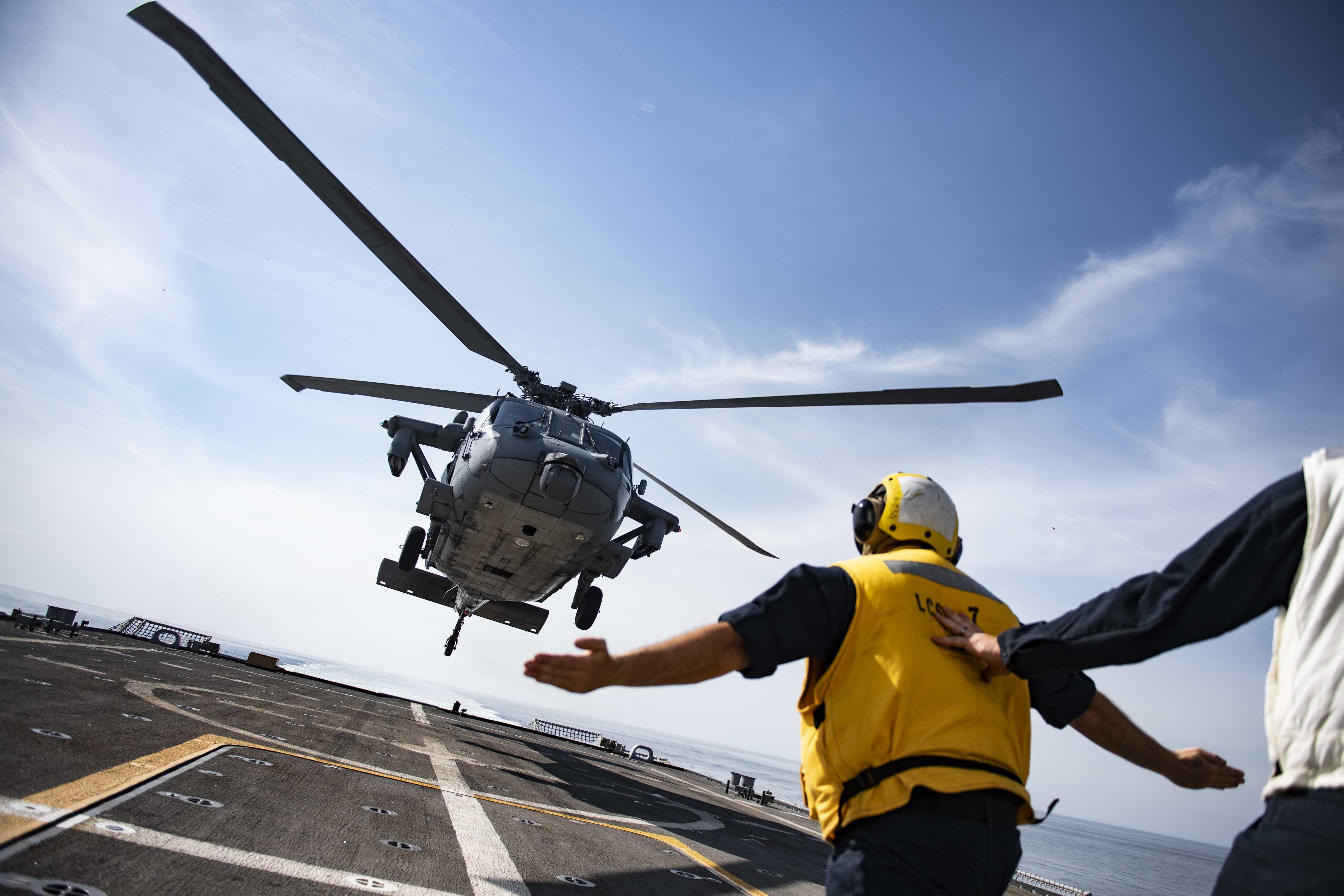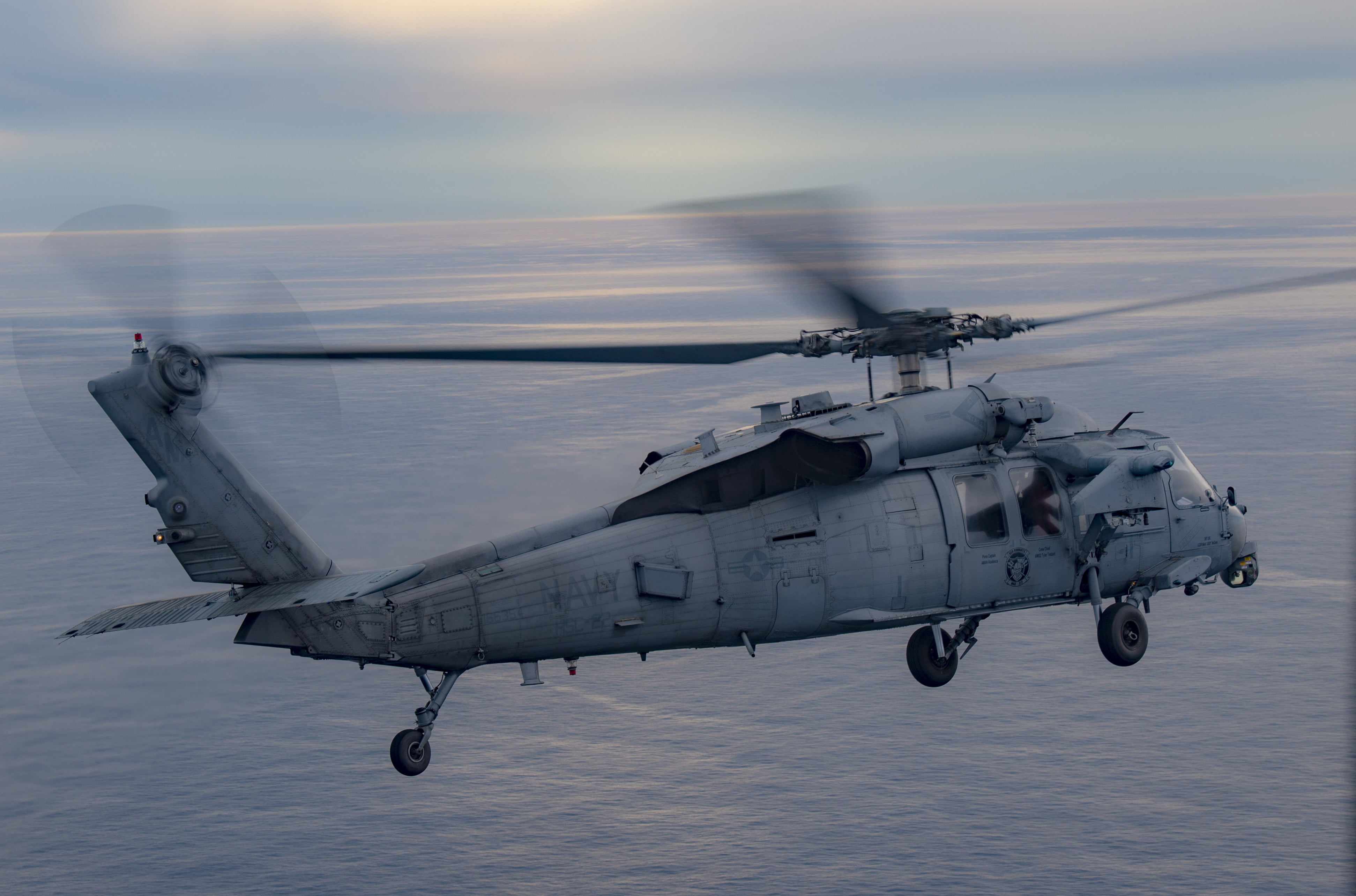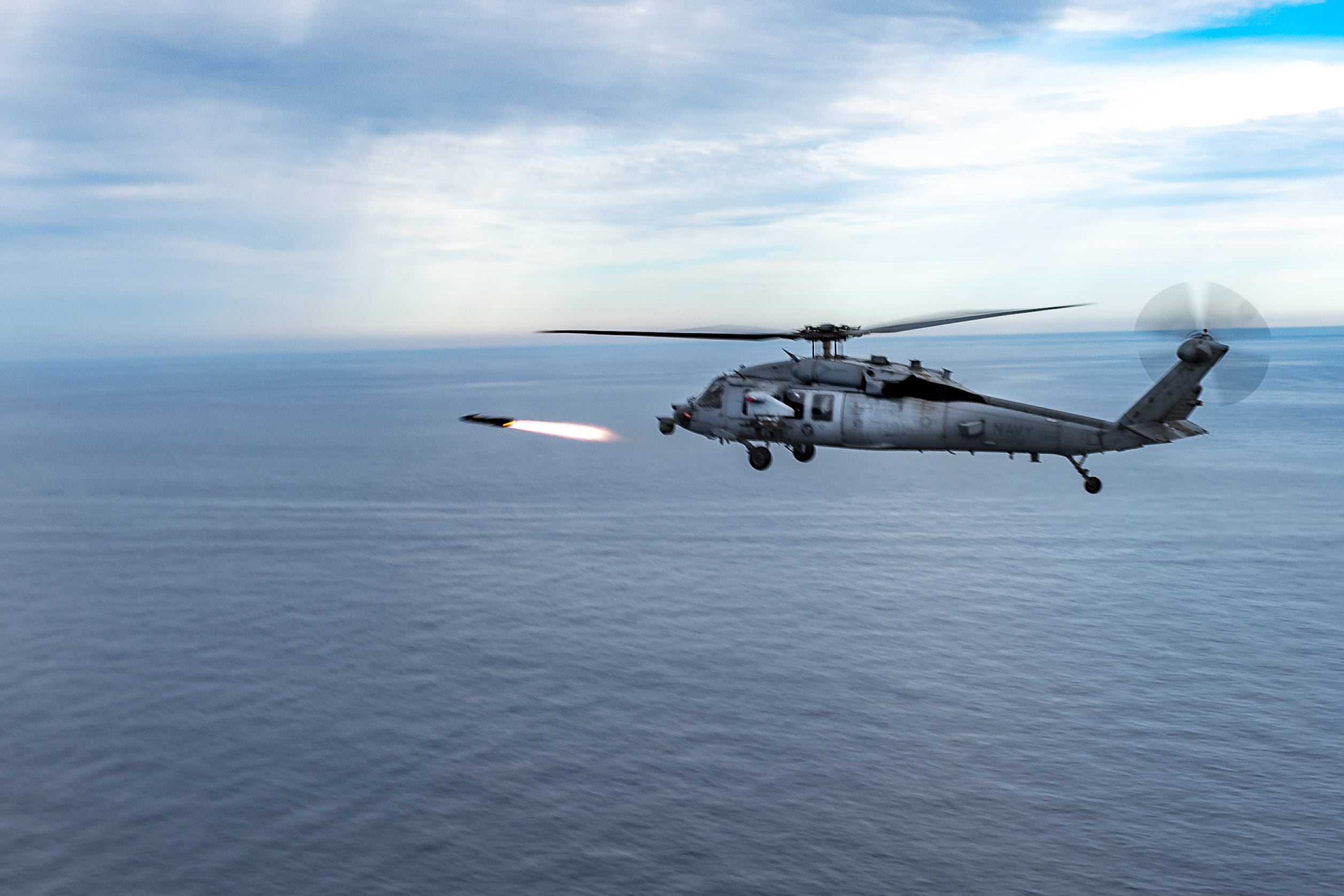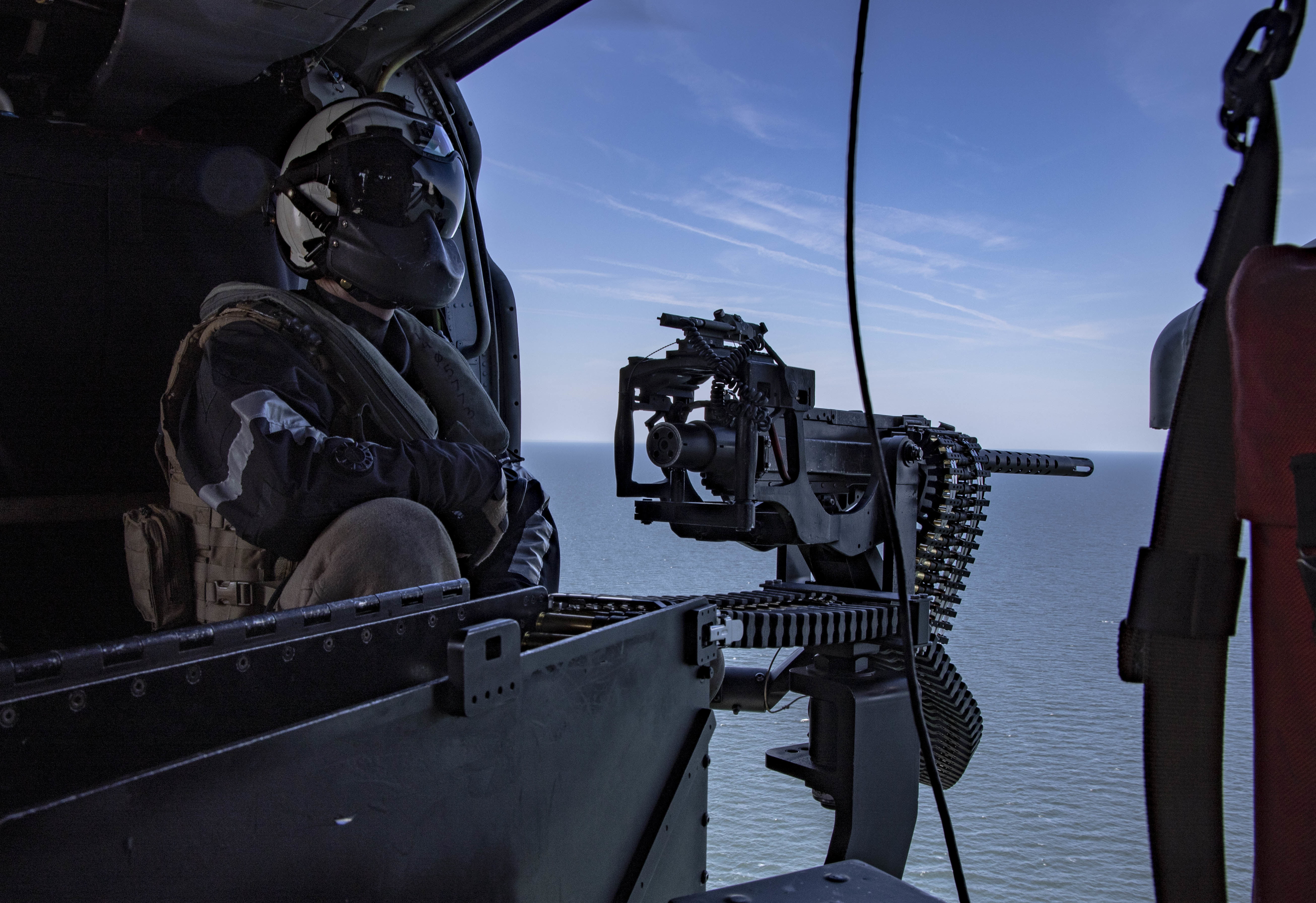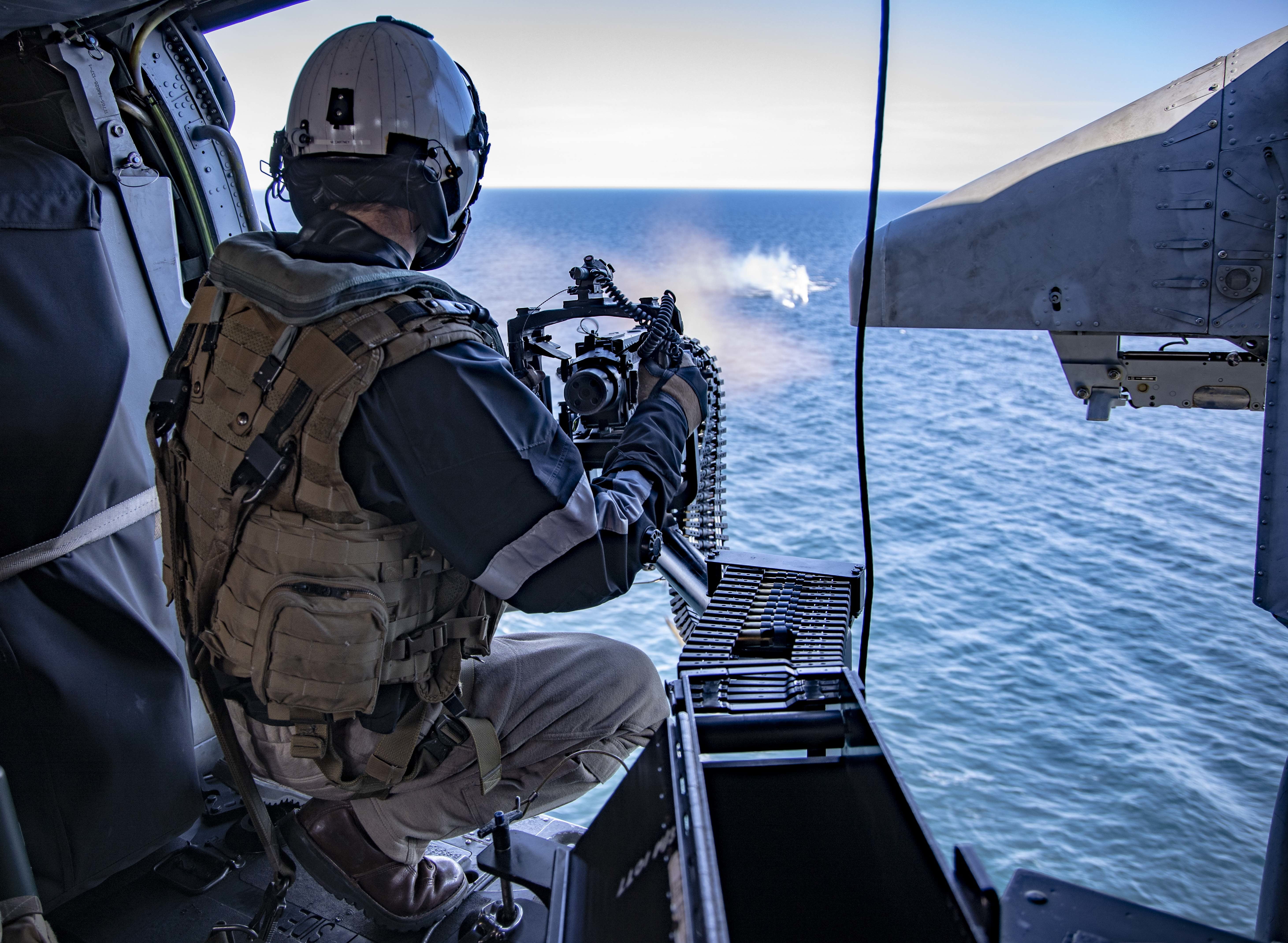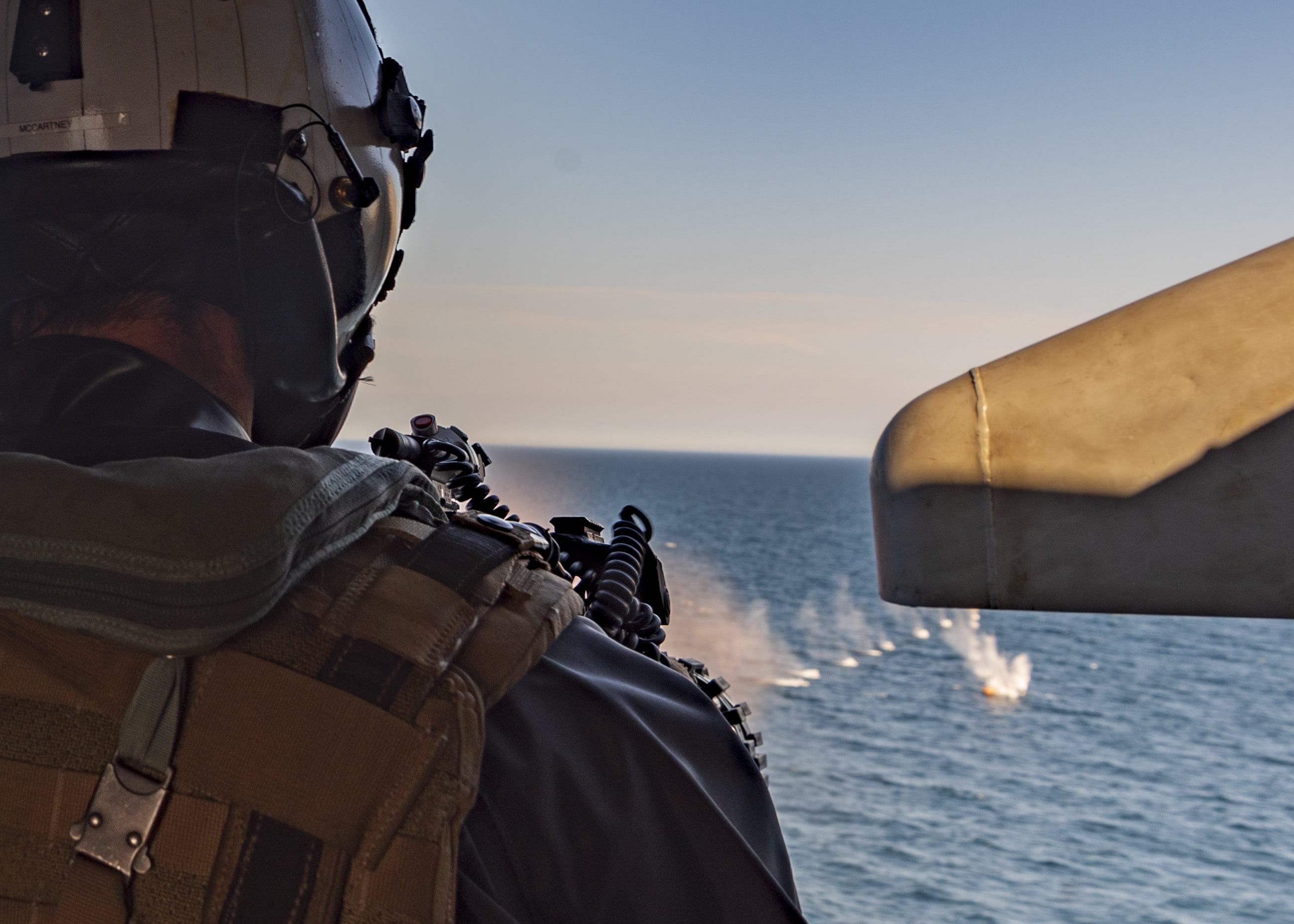By Robbin Laird
During my visit to Jax Navy and Mayport, I had a chance to meet with the leaders of the Seahawk squadron at Mayport and will highlight those discussions in future articles.
But also had the opportunity to talk via teleconference with CDR Gregory Knutson, the CO of the Helicopter Sea Combat Weapons School Atlantic or HSC Weapons School based in Norfolk.
My host, Lt. Jonathan Gosselin had arranged the discussion for a very good reason – not only is the Sierra and the Firescout working in innovative new ways to deliver the desired operational outcome, but there is an important potential to be unlocked by broadening the P-8s working relationship beyond Triton in terms of working with remotely piloted aircraft.
“Helicopter Sea Combat Weapons School Atlantic, established 10 June 2005, combined Weapons and Tactics Units of COMHSWINGLANT and COMHELTACWINGLANT to form a single shore-based command headquartered in Norfolk, VA.
“In 2016, the MH-53E Weapons and Tactics Unit was combined with HSCWSL. HSCWSL provides tactical training to Commander, Helicopter Sea Combat Wing Atlantic HSC and HM squadrons.”
We discussed a number of issues regarding the Seahawk family of helicopters but I am going to focus primarily on one aspect of the CDR’s experience, namely working the Sierra helicopters with the Fire Scout remotely piloted aircraft. We discussed at some length how the two rotorcraft were working tighter off of Littoral Combat Ships.
For example, he explained that the Sierra’s and the Fire Scouts were operating off of LCS ships in support of security missions in the Caribbean. And in those missions, the force package was working in support of Joint Interagency Task Force South.
This command is a multi-service, multi-agency task force based at Naval Air Station Key West and is under the command of a USCG officer.
The command provides a unified command and control for drug interdiction activities. And its C2 is supported by integrated ISR resources as well, and although focused on security missions provides an interesting model of how integration might proceed in other command areas as well.
In support of JIATF South, Romeos and Fire Scouts work together to prosecute the counter-drug mission. Based on a tasking from JIATF South, a potential counter-drug target is identified.
The Fire Scout is sent out to verify that it is indeed a target which needs to be prosecuted. If confirmed, then the Sierra is sent out with a USCG sniper in the back of the helicopter to prosecute the drug smugglers.
The two rotorcraft operate from the LCS with a joint support crew of maintainers. The Fire Scout is managed from the LCS itself and the two rotorcraft work closely together to pursue and prosecute the identified target.
The Fire Scout can also be used to remote designate targets for other assets. For example, with regard to Sierras working with Fire Scout, they can remote designate targets for the Sierra’s Hellfire missiles or APKWS rockets.
This clearly is an important role in the Pacific and has been used in the past as well in the Mediterranean.
What Fire Scout and Sierras have achieved is an operational demonstration of ways remotes and manned assets can work together to prosecute missions.
Certainly, a key way ahead for the P-8 would be to encompass Fire Scout operations as well as Triton operations as a way for paving a way ahead for the expansion of maritime remotes which can be anticipated in the decade ahead.
This is especially important given the challenge which small ships pose to combat ships as well as masking adversarial combat intentions and operations.
Sorting through the chaff of maritime traffic and understanding how adversaries mask intentions and capabilities by using smaller ships is part of the challenge moving ahead.
By being able to use an evolving capability of remote sensing assets, the C2 capabilities afloat, in the air or ashore can be enhanced to make timely decisions with regard to desired security or combat outcomes.
In other words, enhancing the capability to prevail in full spectrum crisis management.
CDR Gregory Knutson
Commander Greg Knutson, a 2001 graduate of the United States Naval Academy, completed flight training and was designated a Naval Aviator in 2003. His first assignment was with the World Famous Golden Falcons of Helicopter Anti-Submarine Squadron TWO (HS-2), supporting Operations UNIFIED ASSISTANCE and ENDURING FREEDOM while deployed aboard USS Abraham Lincoln (CVN-72).
CDR Knutson transferred from HS-2 to Helicopter Anti-Submarine Squadron TEN (HS-10), serving as the SUPERHAWK NATOPS Program Manager, a NATOPS evaluator and Fleet Replacement Squadron Instructor Pilot. During his tour at HS-10 he was selected as the Instructor Pilot of the Year, completed the Seahawk Weapons and Tactics Instructor course at the Naval Strike and Air Warfare Center, and completed his master’s degree from the University of San Diego.
Following his assignment with the HS-10, he transferred to the staff of Carrier Airwing TWO (CVW-2), supporting Operation NEW DAWN while deployed aboard CVN-72.
After completing his Airwing Staff tour, CDR Knutson joined the “Red Wolves” of Helicopter Sea Combat Squadron EIGHT FOUR (HSC-84), one of only two US Navy squadrons dedicated to Special Operations support. While assigned to HSC-84, he completed three deployments supporting the Special Operations Command Central (SOCCENT) Crisis Response Element.
While deployed, he was the Navy Element Commander and Officer-in-Charge for Joint Special Operations Air Component Central, supporting theater Special Operations Forces.
Following his tour with the REDWOLVES, CDR Knutson was assigned to the Joint Chiefs of Staff Deputy Directorate for Nuclear, Homeland Defense and Current Operations (J-33) in the Intelligence, Surveillance and Reconnaissance (ISR) Division. He was subsequently selected as the Flag Officer’s Executive Assistant for the Deputy Directorate of ISR operations (J-32), providing strategic advice to the Secretary of Defense, Interagency Leadership, the National Security Council and members of Congress.
For our special report on the visit to Jax Navy and Mayport, see the following:


